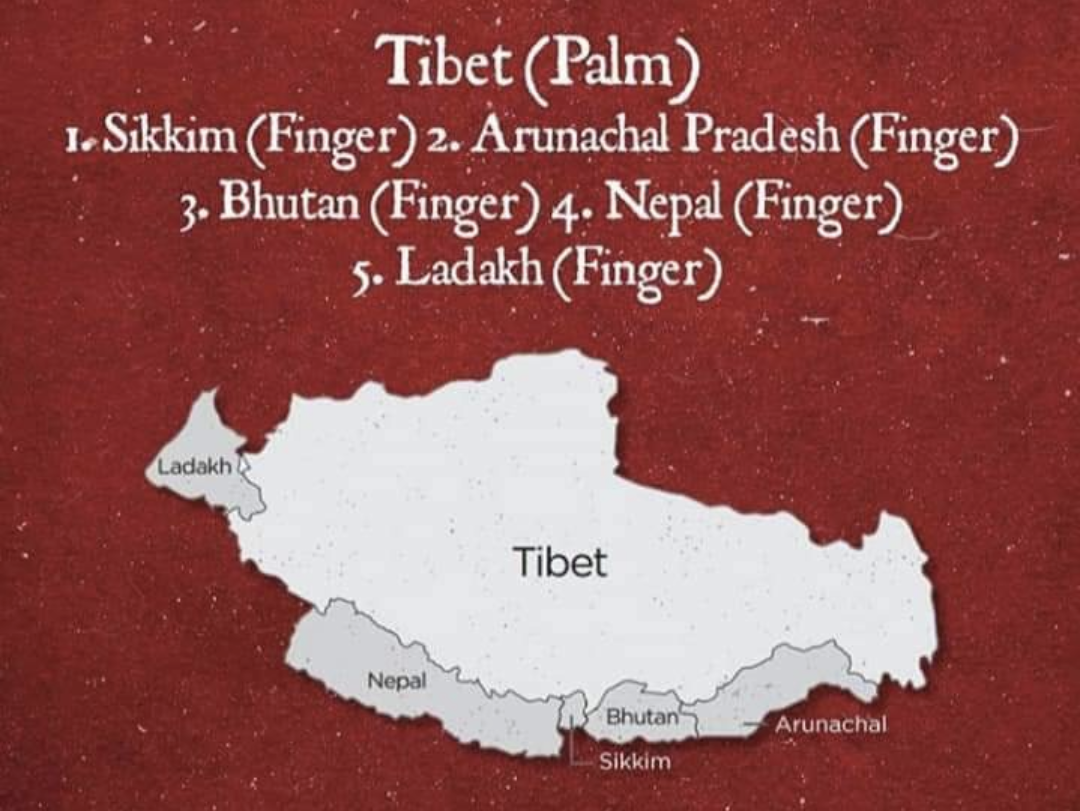The Five Finger and Palm strategy was a plan envisioned by Mao Zedong, the erstwhile leader of China, highlighting that while Tibet was the right hand of China, Sikkim, Arunachal Pradesh, Ladakh, Bhutan and Nepal were its five fingers and “liberating” them was China’s duty.
The Five Finger and Palm Strategy had made fleeting appearances in statements made by successive Chinese governments, until a provisional mouthpiece magazine of the Chinese Communist Party confirmed its existence following the Doklam stand-off in 2017.
During the Chinese civil war, Mao Zedong termed Nepal and Bhutan as tributaries of China. Subsequently, he made further statements throughout then 1940s about the inclusion of the Five Fingers into Greater China. Similar statements were reiterated in 1954, when Chinese officers in Tibet claimed that they would liberate Sikkim, Ladakh, Nepal, Bhutan and Arunachal Pradesh from ‘wrongful occupation’.
The claims over the Five Fingers were reiterated time and again from 1958 to 1961 over radio systems in Beijing and Lhasa. In July 1959, Chinese lieutenant General Zhang Guohua Sadid asserted that the “Bhutanese, Sikkimese and Ladakhis must form a united Tibet, subject to the great motherland of China. Indian diplomats and scholars of the time grasped this intention of China as a reflection of an “expansionist mindset” and not a mere “empty rhetoric”.
At the height of the Coronavirus pandemic, India faced another troubled frontier vis-a-vis China along the border areas of Ladakh and Sikkim. Similarly, there have been instances of Chinese interference in Bhutan and Nepal, designed strategically by the Chinese leaders’ perception that Tibet is the palm and the five Himalayan regions of Ladakh, Sikkim, Arunachal Pradesh, Nepal and Bhutan are the five fingers.
After China annexed Tibet, a buffer point between India and China, the first ever Sino-Indian military face-off was seen in the world’s highest border – the Himalayas. Since then, more than thousands of Chinese military incursions took place across the Indian Himalayan borders. By invading Tibet, China asserted Tibet as strategic asset in China’s expansionist policy towards the Himalayan nations and beyond. Further, China’s militarisation of the Tibetan plateau triggered the geopolitical tensions in South Asia.
What is the importance of the “palm” and the “five fingers”? How do they serve China’s larger geopolitical interests?
- Tibet (the palm)- China sees Tibet as a strategic passage to expand China’s geopolitical ambition in South Asia. Mao Zedong, the founding father of the PRC, strategised Tibet as the palm of China to expand its sphere and influence in South Asia.
- Ladakh- Control over this area will give China access to its all-weather friend Pakistan and subsequently to the Arabian Sea, which will connect China to the West and the Middle-east.
- Sikkim- Control over Sikkim will give China an edge as it serves China’s interests of cutting off the “Siliguri Corridor” (a 22 kilometre wide corridor which connects India’s mainland to the north-east), as a result of which, India’s north-east will be cut off from the mainland.
- Bhutan- Control over this area will bring China closer to Bangladesh through which it can reach Bay of Bengal.
- Nepal- Control over Nepal will give China access to Indian heartland. It can easily build rail or roads easily to India. Or if it deploys its armies in Nepal, then states of UP, Bihar will be well within Chinese reach militarily.
- Arunachal Pradesh- Control over Arunachal Pradesh will help China capture entire North east.
Though this policy is not official, it resonates in the minds of China’s wolf warriors (Chinese diplomats). China aims at encircling India by making inroads into the five fingers. Hence, it is important that India ensure that none of the fingers go to China’s control. Capturing one finger will accelerate the process of a neighboring finger being captured.
